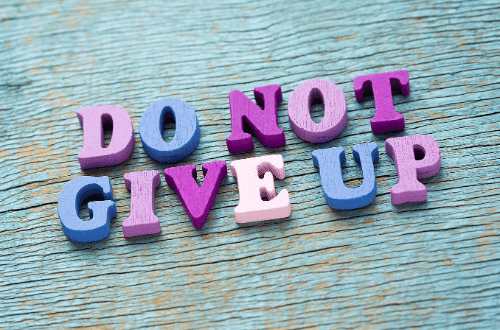5 Confidence Building Exercises
You find yourself faced with a huge challenge, where the potential to fail is waiting...smirking...at you from the sidelines. You are told to “be more confident,” “believe in yourself,” “don’t be so hard on yourself,” and you think, “well that’s a lot easier said than done.” It may seem hard, but it is do-able, you CAN feel better using these confidence building exercises.
This scenario may seem familiar to you. Or maybe you are even reading this and facing a challenge and feeling stuck. The things that hold us back from pursuing our goals and aspirations are 1. fear of failure and 2. the lack of self-confidence that we need to overcome that fear.
So what is self-confidence?
Self-confidence is an attitude about your skills and abilities. Having self-confidence means that you accept and trust yourself and have a sense of control in your life. You view yourself in a positive light and know what your strengths are - as well as your weaknesses. You set realistic expectations and goals and take steps to attain those goals. You are able to communicate assertively with others and can handle criticism.
What causes low self-confidence?
Low self-confidence can be caused by various factors such as: your biological makeup, cultural/ethnic background, the environment you grew up in, adverse childhood experiences, and other life circumstances. While we can’t go back and change the past, we are resilient and can change our thoughts and expectations to build more confidence with a few exercises.
Confidence Building Exercise #1: Fix Your Posture
“Standing up straight with your shoulders back is something that is not only physical, because you’re not only a body, you’re a spirit so to speak, a psyche as well. Standing up physically also implies and invokes and demands standing up metaphysically,” says Clinical Psychologist Jordan Peterson in his best selling book 12 Rules for Life.
Standing up straight can help build confidence.
Simply put, when you stand up straight with your shoulders back, others will treat you with respect. In his book, Peterson further explains how our brain's medial prefrontal cortex detects signals to figure out your position in society. This part of our brain picks up on how others behave around you, and it assumes your social status. Depending on where you think you are in the social hierarchy will shape your values, perceptions of yourself, others, and the world, as well as your emotions, and behaviors.
Studies have shown that sitting and standing up straight have a substantial impact on the way we think and feel. Improving your posture and increasing your daily movement can help boost your mood and energy levels.
Maybe our mothers were right all this time when they told us to stop slouching and sit up straight!
Ancient Indian and Chinese healing traditions emphasize good posture. They speak of chakras, described as spinning wheels of energy along the length of your spine. Also called biofields or energy vortices, they claim these chakras are capable of reception and transmission of energy, which can affect nearby organs. This means keeping your spine erect may impact your health in more ways than just social status.
Confidence Building Exercise #2: Visualization
Your mind is your body’s strongest muscle. When we exercise our mind, our mind can grow stronger and actually work to our advantage. By using the power of visualization and mental imagery, we can empower our brains to allow us to be confident in situations we feel unconfident in. When we use mental imagery, our brain can't tell the difference between a real or an imagined picture. When we visualize ourselves handling a situation the way we would like, the same chemical release and electrical activity displays in our brains. This occurs whether we are visualizing something or actually doing it.
Using visualization and your 5 senses:
Take a few moments and make yourself comfortable in your chair. Bring your attention to your breath. Take a few deep breaths and really focus on your breath going in and out. Close your eyes and imagine a specific situation that you are not feeling confident in. Try to see it in as much detail as possible and using all your senses – you can see it, smell it, hear it, feel it and taste it. Notice how it feels to effectively handle the situation.
When using visualization, bring attention to the sensations in your body that relate to achieving, making progress, and accomplishing your goals, by enhancing the experiences with your senses. Use this technique to help pump you up before events you are worried about. When you feel better about yourself, you will increase your level of motivation to work harder and just do it.
Confidence Building Exercise #3: Affirmations
There are many benefits to using affirmations in our daily lives to build confidence. Affirmations are positive statements that usually target a specific area, behavior or belief. They can help us change the way we view and think about ourselves by replacing maladaptive beliefs we hold. Hal Elrod swears by affirmations in his book The Miracle Morning. In the book, Elrod created the S.A.V.E.R.S. method - which is the foundation of the miracle morning - and the A stands for affirmations.
Tips for creating affirmations according to Elrod:
When choosing affirmations, decide what you really want and why you want it. Why is this important to you? Keep in mind, we want these statements to remain in the realm of possibility. If you don’t believe in the statements you are saying to yourself, then it’s unlikely they will have an impact on your life.
Next, you want to affirm it in the present moment as if it is already happening. Language or words of affirmations should be mentally and emotionally powerful to you. Repetition is key here. When we repeat them often, we can start to believe them and make positive changes.
The more you repeat your affirmations to yourself, the more progress you will see in your ability to create new thought patterns, memories, attitudes and expectations of yourself and your life.
You can think of affirmations as your mantra. Your personal mantra is your one sentence statement designed to retrain your mind and thought processes so that you may better achieve a desirable outcome.
There is a very famous experiment in physics called the double slit experiment. It demonstrates that not only does matter alternately behave as both wave and a particle, but it also suggests we can affect matter at the subatomic level merely by our direct observation - or even remotely. If the mental activity of merely observing can alter the form of matter, there is much potential for energetic forces behind intentions and affirmations. They have the power to affect a change in the physical reality, just as in the double slit test.
You have the power within you to make change happen.
Confidence Building Exercise #4: Track your progress
It can be easy to discount our accomplishments. As humans, we are our own worst critics and oftentimes focus on our shortcomings. Discounting the positive is a confidence killer. When building our confidence we want to recognize progress we have made and celebrate our success along the way.
This is why journaling can be such a powerful tool in our daily lives. Journaling can help you monitor your short term and long term goals, and break them down into smaller steps (so it doesn’t seem so overwhelming and unattainable)! By doing this, you will stay on track and gradually build confidence as you see the progress you're making in real time.
Confidence Building Exercise #5: Smile
As cheesy as this may sound...SMILE! Smiling releases endorphins, dopamine, and serotonin (you can read more about it here.) When these chemicals are released together in your body, they signal that you’re happy, and in turn, you feel happier. Need more reasons to smile? Here are 107 reasons to smile more often.
Traditional Chinese medicine teaches the benefits from learning to always smile from your heart. Smiling can produce emotional energy (Qi) which can flow throughout the body. This helps heal the heart, which is the organ associated with joy. It is considered even more effective than physical exercise. Chinese medicine teaches that practicing to smile from the heart can not only heal the heart on a subtle, spiritual level, but on a physical one as well. Try this ancient Chinese exercise to maintain a youthful appearance, reduce wrinkles and boost your cardiovascular system:
Smile from the heart exercise
While facing the mirror, smile at yourself...no, really smile at yourself... from your heart. This can be hard for some people. If you smile deep from within your heart, and not a forced smile, it actually has a physical effect. The more sincere the smile, the greater the benefit. It assists energy (qi), along with blood, to nourish and energize your entire body. Try and smile from your heart next time you meet someone .
If you are struggling with self confidence and would like to learn more confidence building exercises, contact us today to schedule a free consultation. We also provide support for women struggling with depression, anxiety, and life transitions.
Follow us on social media for more helpful tips and support:
Instagram: @cactusflowerhealing
Facebook: Cactus Flower Healing





